#piobaireachd
Text
Please enjoy this serotonin boost. David Tennant dancing. Music by the band Tartanic. 🏴 🕺🏻
Artist: Tartanic
Song: Briefcase No. 1
Album: Uncivilized (2008)
#David Tennant#Scottish#soft scottish hipster gigolo#Tartanic#unicorn#men in kilts#David Tennant dancing#bagpipes#Scotland#Dance David Dance#kiltedmen#kilt#dance a merry jig#🏴#🦄#serotonin boost#bagpipe music#piobaireachd#celtic music
50 notes
·
View notes
Text
☕ cozy things tag game
comfort food(s): chicken fried steak and mashed potatoes with cream gravy and pepper, grilled cheese, or mac and cheese especially if the cheese is a little brown and crispy at the edges.
comfort drink(s): coffee with a splash of cream and two splenda packets. cocoa with whipped cream and sprinkled with cinnamon.
comfort movie(s): Starship Troopers, Tombstone, While You Were Sleeping
comfort show(s): Law & Order SVU, The Adventures of Brisco County Jr, Jack of All Trades
comfort clothing: my oversized bathrobe, especially paired with my Longhorns tee-shirt and grey leggings, my sea-turtle slippers.
comfort song(s): Alice's Restaurant and City of New Orleans by Arlo Guthrie, Donald McGillavry by Silly Wizard, literally any piobaireachd. Hunger Strike by Temple of the Dog.
comfort book(s): Night Watch, Maskerade, Reaper Man, {{really all the Discoworld novels}} by Sir Terry Pratchett, The Princess Bride by William Goldman, Mona Lisa Overdrive and Burning Chrome by William Gibson, The Jungle Book and the Just So stories by Rudyard Kipling, The Horatio Hornblower series by CS Forester, The Richard Sharpe series by Bernard Cornwell <goes on listing books for a solid two weeks>....
comfort game(s): American Football {{College is better than pro but I have teams in both brackets}}, Dragon Age, Pathfinder, World of Darkness, Texas Hold 'Em....I mean I think we need to define this catagory better.
~*~
Tagged by: my beloved C over @nightmarefuele
Tagging: Seven incredibly tired hedgehogs in an inflatable dinosaur suit. Just tag me back.
9 notes
·
View notes
Photo

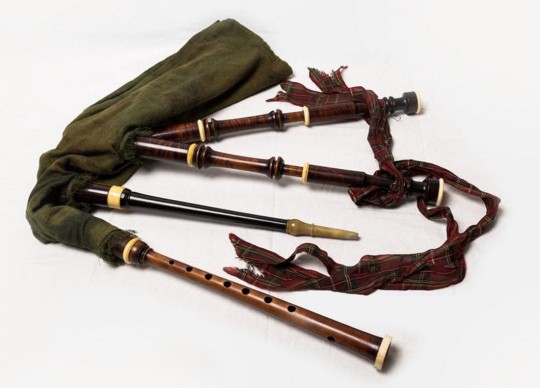
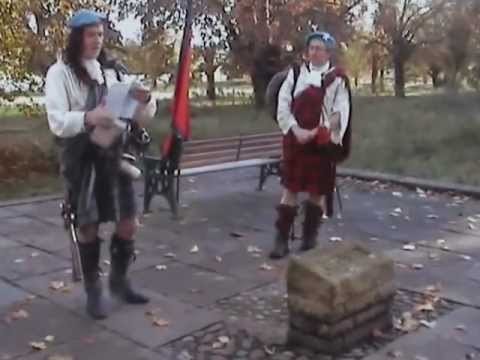
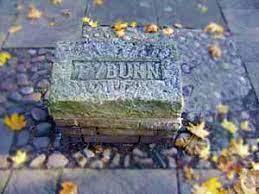
On November 15th 1746, James Reid was executed at York for being a part of the Jacobite uprising.
Reid, a native of Angus, was among many Jacobites captured at Carlisle and as per usual dates are a bit iffy with this post.
The following is an extract from Grattan Flood’s Story of the Bagpipe. “So powerful a factor was the Scotch bagpipe in working up enthusiasm for the Stuart cause that it was regarded as an instrument of war. This point is amply proved by the fact that James Reid, a Scotch piper, was tried at York for high treason, the capital offence being that as no Highland Regiment ever marched without a piper; therefore, his bagpipe in the eye of the law was an instrument of war.
“Reid suffered death at York on November 6, 1746, as is reported in the contemporary Caledonian Mercury.”
On checking this information in the National Library [in Edinburgh] it was noted that this information was given in the Caledonian Mercury of November 25, 1746. The following is the extract:
“On Saturday 15th James Reid was executed for high treason at York. He was of the Shire of Angus and a private man in Lord Ogilvy’s regiment”.
Lord Ogilvy was only 21 years old and commanded two battalions. He had held a commission in the French Army and was very popular with his men. The Angus men were supposed to be the best equipped and according to some accounts the best disciplined in the Prince’s army. They kept the retreating right wing at Culloden from being cut to pieces. Lord Ogilvy escaped to France via Norway and became a general in the French army. He eventually regained his estates. He died in 1803.
In the three volumes of Prisoners of The ’45 by Sir Bruce Seton and Jean Gordon Arnot (published in 1929) there are several hundred names of soldiers of Charles Edward Stuart. Some of the pipers listed are as follows:
John Sinclair. Piper in Ogilvy’s regiment. Town piper of Arbroath. Discharged March 4, 1747.
John Ballantyne. Piper in Lord George Murray’s regiment. Taken at Carlisle. Tried at York on October 2, 1746 and acquitted.
Nicholas Carr. Piper in Glenbucket’s regiment; acquitted October 1746.
Robert Jamieson. Piper in the Duke of Perth’s regiment; captured at Carlisle and transported.
Allan MacDougall of Duke of Atholl’s and Lord Nairn’s regiments; served as a blind Highland piper and was taken at Falkirk. He was pardoned in 1747. What a blind man could do in an army had only one reason. He must have been an exceptionally talented and well known piper. Could this have been Blind MacDougall mentioned in Angus MacKay’s MS? His name is associated with the following tunes: The King’s Taxes, Farewell Donald, Lament For Captain MacDougall, the Nameless tune (Book 4 of the Piobaireachd Society Collection (three Nameless tunes are shown but which one is MacDougalls is not clear), Cumha Iain Cheir, The Duke of Perth’s Lament and Lachlan MacNeill of Kintarbert. Angus MacKay states that this MacDougall is Ronald MacDougall and it is not likely that there are two blind MacDougalls. It could be reasonable to assume that this blind MacDougall piper is the same man.
And the main subject of this post;
James Reid. Piper in Ogilvy’s regiment. Executed York on November 15, 1746. The relevant entry is:
2800. Reid, James. Piper, Ogilvy’s. 30.12.45 Carlisle; Lancaster Castle, York. Executed York 15/11/46. Angus. Taken at capture of Carlisle. It was pointed out at his trial at York on 2nd Oct. that he was only a piper, but he was found guilty but recommended to mercy. Nevertheless he was executed. The Court ruled that ‘no regiment ever marched without musical instruments such as drums, trumpets and the like; and that a Highland regiment never marched without a piper; and therefore his bagpipe, in the eye of the law, was an instrument of war.” – Baga, lxix. 193; S.P.D., 79-26, 91-77.
Also listed were several drummers and fiddlers.
Manson, in his book The Highland Bagpipe, states that Charles Edward had 32 pipers playing before his tent at meal times. The relevant papers a decisions about hanging Reid have been checked up in the [National] Library in Edinburgh and in London and I have yet to find any government decision to hang rebel pipers. James Reid was not the only piper – he was just the unlucky one as the rest got off or were transported.
It would appear that the decision to hang Reid was made by the court at York in isolation and not under any official directive. There is little record of pipers being harassed, imprisoned, or hanged for playing the pipes after the ’45 and we know that Joseph MacDonald compiled his Compleat Theory of the Scots Highland Bagpipe in 1760, 14 years after the troubles. It would be reasonable to assume that piping did not suffer unduly.
James Reid must be unique in piping history as the only one who lost his life because he was a piper.
Black Watch museum in Perth also hold information on Jacobite prisoners, including James Reid, they appear to records taken directly from the hearings;
“John Porteous was tried next, who appeared to be Deferter from one of our Regiments: He alledged, in Excufe of his Offence, and as a Plea to ftop Sentence, that he had the Promife of his Royal Highnefs the Duke of Cumberland for his Pardon – Guilty.
“James Reid was then tried, whom the Witneffes for the Crown plainly proved to have engaged with the Rebels, and to have acted as a Piper to a Rebel Regiment, tho’ it did not appear that he had ever carried any Arms; upon which he was recommended to Mercy by the Jury. The Court obferved upon this, that every Perfon who joined any Set of People engaged in an open Rebellion, tho’ they did not bear Arms, they were guilty of High Treafon; that no Regiments ever marched without Mufical Inftruments, as Drums, Trumpets, or the like; and that in an Highland Regiment there was no Moving without a Piper, and therefore his Bagpipe, in the Eye of the Law, was an Inftrument of War. The Jury upon this would have retracted their Recommendation, but the Court told them, it muft not now be permitted — Guilty. Then the Court adjourned to Saturday.
“On Saturday, James Main was firft brought to the Bar; but his Counfel moving for farther Time, upon Account of fome of his Witneffes being on the Road, the Court was fo favourable, as to poftpone his Trial.
“Then John Long was brought upon his Trial, and fix Witneffes were examined for the Crown, to prove that he had acted as a Surgeon’s mate in the Rebel Army; but the Proof not coming up to the Species of High Treafon laid in the Indictment, he was acquitted on the Motion of the King’s Counfel.
“James McColley was tried next, and was proved by four Witneffes to have appeared in Arms at feveral Places: He did not attempt to contradict this in his Defence, but examined fome Witneffes to fhew that his Cafe was the fame with Charles Robinfon’s — Guilty.”
In total there were 22 Jacobites executed at York in the wake of the ‘45 Crann Tara held a commemorate event in York in their memory ib 2007, a simple stones marks where they met their end. You can watch the commemoration on Youtube here https://www.youtube.com/watch?v=a05QSzs_u60
21 notes
·
View notes
Text
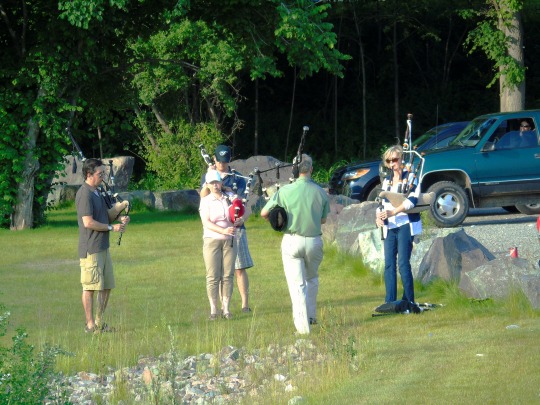
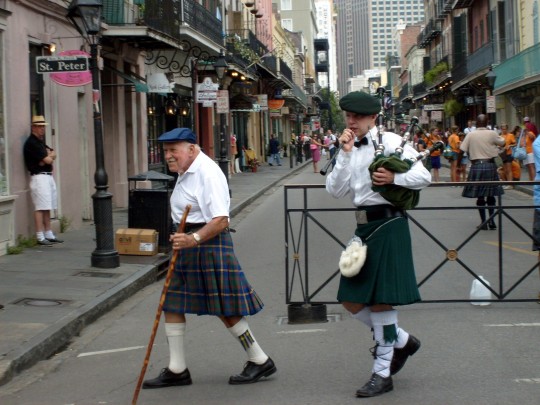

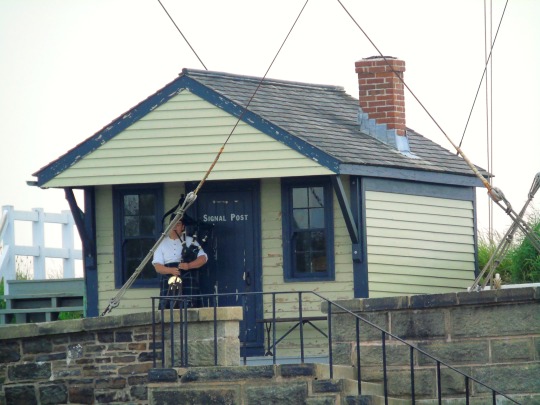


Bagpipe Appreciation Day
Today we celebrate the bagpipes! The instruments have long been associated with the Scottish Highlands, although they have come from many different places, and there are many variations of them. They have also been used in many different contexts.
The main components of the bagpipe are the bag, chanter, and drones. The bag is usually made of animal skin or rubberized cloth. It is inflated either by having air breathed into it through a blowpipe or by using a bellows. Air can then be fed throughout the instrument to make the sound, by placing arm pressure on the bag. The bag allows sound to be continuous while giving players the chance to take breaths, as well as for several tones to be played at the same time.
The chanter, or melody pipe, has finger holes that let a player make notes to form melodies. The other pipes, called drones, may have single or double reeds. They play single, constant notes that accompany the melody. They are tuned with the chanter by lengthening or shortening their extendable joints. The pipes are in wooden sockets, or stocks, which are tied into the bag.
Initially, folk instruments, bagpipes have remained as such, but also have been used in battle, at parades, funerals, weddings, and royal occasions. They were probably first used by pastoral sheep and goat herders, who played them to pass time while watching their flocks. They made them with easy-to-come-by materials such as skin, bones, and reeds. These instruments would quickly decay, so there is no physical evidence of them.
Bagpipes may have been used for centuries before any record of them was made. Most believe they were invented in the Middle East, and that the sheep and goat herders that used them were in Mesopotamia. There is some indication that they were used in ancient Egypt. A Hittite wall carving from around 1000 BCE shows a form of a bagpipe, and they are mentioned in the Bible in the book of Daniel. A bagpiper is also possibly depicted on an Alexandrian terracotta figure from around 100 BCE.
From the Middle East, bagpipes likely traveled to Greece, where they were known as "askaulos," meaning "wineskin pipe." They are mentioned in one of Aristophanes's plays from about the fourth century BCE and appear in other Latin and Greek references from around 100 CE. After the Romans invaded Greece, the bagpipe was adopted throughout the Empire just as other Greek culture was. They were mainly used by plebeians, but even Nero was known to play one. They were also used by the Roman infantry, while the Roman cavalry used the trumpet.
The British Isles became the most popular home for bagpipes. Invading Romans may have brought them there, or they may have later arrived by trade. They were mentioned in English author Chaucer's The Canterbury Tales in the 1380s. Some think they were imported to the British Isle of Scotland from the Romans, while others believe they came from England, Ireland, or developed in Scotland on their own.
Original Scotland pipes probably had one drone, with a second drone likely added in the mid to late sixteenth century, and a third drone likely added in the early eighteenth century. Scottish Highlands bagpipes had two tenor drones and one bass drone. It was there that bagpipes became more popular than anywhere else in Scotland or the world. In the Highlands, players were influenced by Celtic legends as well as by the wild nature of their surroundings. The players held an honored position in their clans. There are references to Scottish Highland bagpipe players by the fifteenth century, who played at weddings and festivals and even replaced organists at church. During the mid-sixteenth century, at a time when bagpipe music was descendent through most of Europe, it was ascendant in the Highlands. The MacCrimmon family did much to nurture its growth. A classical musical form that used the bagpipes sprang up there; it was called piobaireachd and predated the piano and its classical music by about a century.
Originally pastoral and festive, the military began using the bagpipe in the eighteenth century and accompanied it with drums. Battlefields were loud, so instruments were used to communicate. Bagpipers from clans—who were often at war with each other—would inspire soldiers before battle, and played during battles to signal movements, attacks, and retreats. When the Scottish uprising of 1745 failed, military training was banned. Thus, the bagpipe could no longer be used in this context anymore, although it was not banned for other uses.
In the Scottish Lowlands, pipers held important positions in communities. There were town pipers, and those who played dance music and songs at weddings, feasts, and fairs. The soft sounding Scottish Lowland bagpipe was played from about 1750 to 1850; it had a bellows, and three drones in one stock.
When England and Scotland united in the early eighteenth century, bagpipes were brought all over the world to British colonies, to places such as Africa and Ceylon. In many places, there already were indigenous bagpipe type instruments, which had been used for folk music and military purposes. Some examples are the tulum of Turkey, pilai of Finland, zampogna of Italy, mashak of India, mizwad of Tunisia, tsampouna of Greece, volynka of Russia, gaita of Macedonia, and the Bedouin habban.
There are many variations of the bagpipe popular today, such as the cornemuse of central France, the aforementioned zampogna of Italy, and the Irish union pipe. The most popular is probably Scotland's Great Highland bagpipe. Today we celebrate all types of bagpipes, and their importance to culture and in bringing us music!
How to Observe Bagpipe Appreciation Day
Playing the bagpipe is probably the best way to celebrate the day. Perhaps you already have one and know how to play it, or maybe you still need to get one and learn. Listening to artists who feature a bagpipe is a great way to celebrate the day, as is listening to bagpipe versions of popular rock songs. You could also read a book on the history of bagpipes, or a book on Highland bagpipes. If you feel like seeing some bagpipes firsthand, you could visit the Musical Instrument Museum in Phoenix, Arizona, or plan a trip to the Morpeth Chantry Bagpipe Museum, or the International Bagpipe Museum.
Source
#Citadel Hill#Fort George#Halifax Citadel National Historic Site of Canada#Halifax#Nova Scotia#Ottawa#Parliament Hill#Ontario#Canada#summer 2015#travel#usa#original photography#vacation#tourist attraction#landmark#architecture#cityscape#Sydney#Cape Breton Island#New Orleans#Louisiana#Bagpipe Appreciation Day#27 July#BagpipeAppreciationDay
2 notes
·
View notes
Text
Drowning in a Piobaireachd – A Sophia Yeggs Mystery
Note: Last week, Sophia was grounded, and she had to massage her parents’ feet for over a month. Afterward, Captain Hart suspended her, although she has never been an official police detective and Poached was told he was on a very short leash. This might get interesting.
Also note: When you see the word Piobaireachd, it is pronounced Pea-Brock, maybe roll the “R” a bit. The Piobaireachd is a…
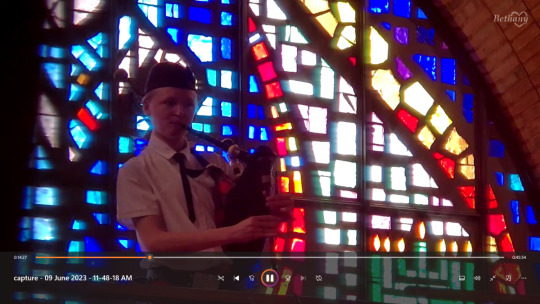
View On WordPress
0 notes
Text
Bagpipe player los angeles

Bagpipe player los angeles professional#
East Coast Piping Championshipġ988 3rd & 4th Place in MSR: Barrie Championship (Ontario)ġ989 2nd Place in MSR: Barrie Championship (Ontario)ġ989 3rd Place in Piobaireachd: Cambridge Gold Medal (Ontario)ġ998 1st Place in Strathspey/Reel: North American Championships (Ontario)ġ989 2nd Place in Jigs and March: B.C. against top competitors at Glennfidich Championship in Scotland)ġ996 Aggregate Winner: Capitol District Games (Schenectady, NY)ġ997 2nd Place Overall: Metro Cup (Newark, NJ)ġ998 2nd Overall: U.S. Piping Foundation Competition (represented U.S. East Coast Piping Championship Aggregate Winnerġ995 1st Place Overall: Metro Cup (Newark, NJ)ġ995 1st Place in MSR and Piobaireachd Aggregate Winner: U.S. East Coast Piping Championshipġ994-97 Winner: “You Be the Judge” contest (Babylon, NY)ġ995 U.S. East Coast Piping Championshipġ989 3rd Place in Invitational Piobaireachd: U.S. East Coast Piping Championship (4 years in a row)ġ988 3rd Place in Piobaireachd: U.S.
Bagpipe player los angeles professional#
McAllisterġ975 Silver Chanter and Gold Medal: Santa Monica, California Championship (16 years and under)ġ976-78 1st Place in MSR, Jigs, and Piobaireachd: San Diego Highland Gamesġ979 1st Place in Amateur Piobaireachd: Santa Rosa Highland Gathering (still hold record as the youngest to win this award at age 12)ġ983 1st Place in Professional Piobaireachd: Santa Rosa Highland Gathering (still hold record as the youngest to win this award at age 17)ġ983-84 1st Place in MSR, Jigs, and Piobaireachd: Costa Mesa Highland Gamesġ985-88 1st Place in MSR, Jigs, and Piobaireachd: Costa Mesa Highland Gamesġ989 2nd Place in MSR, Jigs, and Piobaireachd: Costa Mesa Highland Gamesġ990-94 1st Place in MSR, Jigs, and Piobaireachd: Costa Mesa Highland Gamesġ992-94 1st Place MSR: Costa Mesa Highland Gamesġ992-93 1st Place Piobaireachd: Costa Mesa Highland Gamesġ994 1st Place Piobaireachd: Costa Mesa Highland GamesĢ018-19 Seattle Highland Games Piping Championship (Piobaireachd)ġ988-91 1st Place in MSR and Hornpipe/Jigs: U.S. Pipe band tuition by Tom McAllister, Jr., Terry Lee, and J.Coyne, Angus MacKay, Duncan Johnstone, PM Angus MacDonald, Jimmy McIntosh, Murray Henderson, Donald MacLeod, Captain John MacLellan, and Jack Lee Coyne Memorial School of Piping and Drumming in 5 cities nationwide from 1996-2002 in Los Angeles from 2003 to present Director and Chief Instructor for the James J.Taught classes for Highland Bagpipe & Drumming Iona College Professor of Music from 1998-2001.Lived in Australia for 2 years and played in Grade 1 bands there successful in solo competitions.Won the West Coast and Canadian Piobaireachd Championship at the age of 17 (still hold this record).Became professional at the age of 12 years (youngest in the world to turn professional).Started playing bagpipes at the age of 3 ½ years.Electrical Engineering (Recording), UCLA, 1989Ĭertificate in Sound Engineering and Disc Mastering, Sound Masters, 1989

0 notes
Text
Dumbarton's Drums
Let the drums of Dumbarton ring on the Irish & Celtic Music Podcast
Cady Finlayson, Bonnie Rideout & Matt Bell, The Breath, Tom Morley, Beth Patterson, Patrick O'Flaherty, The Tannahill Weavers, Hank Cramer, Dàimh, Jolly's, Billy Treacy & the Scope, The Irish Rovers, James Shipp, The Rathmines, Boston Blackthorne
I hope you enjoyed this week's show. If you Heard a song, tune or artist that you loved, I’d like you to share this episode and tag the artist on social either on your page or in a Celtic group you’re a part of. Include the show time so they can quickly listen and enjoy.
The Irish & Celtic Music Podcast is here to build our diverse Celtic community and help the incredible artists who so generously share their music with you.
Musicians rely on your support so they can keep creating new music. If music in this show inspired you, you can buy their CDs, digital downloads, shirts, pins, and other merch. You can follow them on streaming and see their shows. More and more Celtic musicians are on Patreon, just like this podcast. And of course, I always appreciate it when you drop artists an email to let them know you heard them on the Irish and Celtic Music Podcast.
GET CELTIC MUSIC NEWS IN YOUR INBOX
The Irish & Celtic Music Magazine is a quick and easy way to plug yourself into more great Celtic culture. Subscribe and get 34 Celtic MP3s for Free.
VOTE IN THE CELTIC TOP 20 FOR 2022
This is our way of finding the best songs and artists each year. You can vote for as many songs and tunes that inspire you in each episode. Your vote helps me create next year's Best Celtic music of 2022 episode. Vote Now!
THIS WEEK IN CELTIC MUSIC
0:10 - Cady Finlayson "Tuttle/Caislean an Oir" from Irish Coffee
3:06 - WELCOME
4:45 - Bonnie Rideout & Matt Bell "Pibroch" from Scotland's Fiddle Piobaireachd, Volume 2
9:17 - The Breath "Only Stories" from Only Stories (Let the Cards Fall Revisited)
13:06 - Tom Morley "The Raven's Wing/The Wise Maid/Dinkey Dorian's" from The Raven's Wing (A Curious Collection Of Fiddle Tunes)
18:18 - Beth Patterson/Patrick O'Flaherty "Cúnla" from Caelic
19:55 - FEEDBACK
22:29 - The Tannahill Weavers "Dumbarton's Drums" from Live And In Session
26:43 - Hank Cramer "Bound Down to Australia" from Loosely Celtic
30:43 - Dàimh "Locheil's Away" from The Hebridean Sessions
35:58 - Jolly's "The Mero" from True Irish Spirit
39:14 - THANKS
41:21 - Billy Treacy & the Scope "Ma" from Life
45:30 - The Irish Rovers "Narwhal, the Continuing Story of the Unicorn" from The Unicorn, the Continuing Story
50:26 - James Shipp "The Frost is All Over" from Nos Novo Strange Sweethearts in America
54:18 - The Rathmines "Paddy's Taksim Square" from Ramblin' with the Rats - Stolen Songs of Struggle
57:27 - CLOSING
59:01 - Boston Blackthorne "Drill Ye Tarriers, Drill: A Land Shanty!" from Drill Ye Tarriers, Drill: A Land Shanty!
The Irish & Celtic Music Podcast was edited by Mitchell Petersen with Graphics by Miranda Nelson Designs. The show was produced by Marc Gunn, The Celtfather. Subscribe through your favorite podcatcher or on our website where you can become a Patron of the Podcast for as little as $1 per episode. Promote Celtic culture through music at http://celticmusicpodcast.com/.
WELCOME TO CELTIC MUSIC
* Helping you celebrate Celtic culture through music. I am Marc Gunn. I’m a musician and podcaster. I want to introduce you to some amazing Celtic bands and musicians.
The artists in this show need your support, which you can do by buying their music. You can find a link to all of the artists, including show times and chapters for each song when you visit our website at celticmusicpodcast.com. You can also support this podcast on Patreon.
Poitin Band introduced today’s show. Find a link to them in the shownotes.
WHAT’S NEW IN IRISH & CELTIC MUSIC: BEST OF 2022
Two weeks after the episode is launched, I compile the latest Celtic Top 20 votes to update a playlist on Spotify, Amazon Music, and now YouTube. These are the results of your voting. You can help these artists out by following the playlists and adding tracks you love to your playlists.
The newest band added to the playlist: Vicki Swan & Jonny Dyer, The McDades, Syr
Listen on Spotify, Amazon Music, and YouTube.
BUY SELCOUTH BY MARC GUNN
My latest CD features Sci F’Irish music. That means it is original songs fusing pop culture themes with Irish drinking songs. There are some traditional music on the album. But mostly, it features songwriting by Marc Gunn with guests including: Screeched Inn, The Muckers, Jamie Haeuser, Sam Gillogly, Nathan Deese, and Mikey Mason.
Selcouth means, “when everything is strange and different, yet you find it marvelous anyway.”
The album is not completely Celtic and it’s not just science fiction and fantasy. It’s a fusion of the two. It’s heartfelt and a lot of fun.
It’s now on sale in my Bandcamp store. Check out Selcouth now.
THANK YOU PATRONS OF THE PODCAST!
Because of Your kind and generous support, this show comes out at least four times a month. Your generosity funds the creation, promotion and production of the show. It allows us to attract new listeners and to help our community grow.
As a patron, you hear episodes before regular listeners, vote in the Celtic Top 20, and a private feed to listen to the show. That’s for as little as $1 per episode.
For higher pledges, you can also get music - only episodes, free MP3s, and stand - alone Celtic Stories when you become a Song Henger.
A super special thanks to our Celtic Legends: Dan mcDade, Carol Baril, Miranda Nelson, Nancie Barnett, Kevin Long, Lynda MacNeil, Annie Lorkowski, Travis Senzaki, Shawn Cali
HERE IS YOUR THREE STEP PLAN TO SUPPORT THE PODCAST
Go to SongHenge.com. That takes you to our Patreon page.
Decide how much you want to pledge every week, $1, $5, $10. Make sure to cap how much you want to spend per month.
Keep listening to the Irish & Celtic Music Podcast to celebrate Celtic culture through music.
You can become a generous Patron of the Podcast on Patreon at SongHenge.com.
TRAVEL WITH CELTIC INVASION VACATIONS
Every year, I take a small group of Celtic music fans on the relaxing adventure of a lifetime. We don't see everything. Instead, we stay in one area. We get to know the region through its culture, history, and legends. You can join us with an auditory and visual adventure through podcasts and videos. Learn more about the invasion at http://celticinvasion.com/
#celticmusic #irishmusic #celticmusicpodcast
I WANT YOUR FEEDBACK
What are you doing today while listening to the podcast? You can send a written comment along with a picture of what you're doing while listening. What are you doing with your local celtic community?
Email a voicemail message to [email protected]
Henry Severeide emailed his list 5 top bands:
Wolftones
Dubliners, with Luke Kelly
Fureys, with Davy Arthur
Planxty
Pogues
Hope you like my picks”
Sheila Neil emailed: "I love your show. It honors my Celtic ancestors. I wish you can play Celtic Women's O America. You are a great Podcast host.''
Michael Maskow emailed pictures: "Hi Marc, found the podcast this past year and it is a joy to celebrate our Irish and Celtic culture while listening to the amazing musicians.
As an artist, I love to listen as I am painting, and often when out and about immersed in lovely nature here in southern California. Please enjoy these recent pieces and keep up the great work. Cheers, Michael"
Check out this episode!
0 notes
Text
An illuminated piece of Piobaireachd (bagpipe) music made in Scotland in 1906!

1 note
·
View note
Photo





Now available from gracenoteapparel.com!
Starting at just $45.95 but until the end of September get $10 off with the code “WEGOTYOURBACK”.
Worldwide shipping just $7.95
#bagpipes pipebandbagpipe scotland celtic scottish gaelicpiobaireachd kilt music apparel shirtsshirt design glasgow ochayepipesanddrums pipes#bagpipes#pipeband#scotland#celtic#scottish#gaelic#piobaireachd#kilt#music#apparel#shirt#shirts#design#backpack#glasgow#ochaye#pipesanddrums#pipesdrums#pipes#pipers#piper
13 notes
·
View notes
Text
“Cabar Feidh Gu Brath” by P.M. Donald MacLeod
Little bit of bagpipe trivia for all y’all.
Canntaireachd (“chanting”) is a system of notation for Piobaireachd (also called Ceòl mòr as opposed to Light Music which is what most pipe bands play) in which each note/embellishment combination map to a specific sung syllable. This allows the piece to be sung and by extension, learned and passed on. Now Piobaireachd is often notated using standard pipe notation, but the form is known for its long-windedness and complex ornamentation that standard notation struggles to do it justice.
#not watt#Patroc plays#bagpipes#that being said I play light music exclusively#we just sang this at our concert to demonstrate before our piobaireachd champ came out to play it for us
1 note
·
View note
Link
This is an excellent recording of what’s probably the first pìobaireachd most fowk learn.
Shame he doesn’t let the ned ring and plays a little fucking about flourish instead.
2 notes
·
View notes
Text
the overture of 1789 really did that, huh
#it and '63 she loves me and Titanic get me every time like why do I always forget how good these are#oh also SLM entr'acte ? *chef's kiss*#the piobaireachd in brigadoon london '88 ???#basically: appriactiate instrumentals in mt#jillian rants#let's chat#20202.0
0 notes
Photo

Tiree, Pipe Major, 72nd Highlanders (1824-1884)
The “Notices of Pipers” describes John MacDonald of Tiree as follows:
A native of Tiree. Studied piping under John Ban Mackenzie. Joined the 72nd Highlanders as a piper in 1843, and became Pipe Major in 1856. He was an entrant for piobairachd playing at Inverness in 1854, being described as “Pipe Corporal, 72nd Highlanders”.
Served with his regiment in the Crimean war, where as Pipe Corporal he won the first prize for piobaireachd, and for marches, strathspeys and reels at the piping competition open to the Highland Division held at Kamara Camp, August, 1855.
He was Pipe Major of the 72nd during the Indian Mutiny. Retired on pension in 1865, and was appointed pipe major of the Stirlingshire Militia, with which he remained for five years, and then became Piper to the Marquess of Lorne who was Governor General of Canada.
He died in Tiree, in 1894. Being a fine stamp of Highlander, he attracted the notice of Queen Victoria when his regiment was being inspected by her upon its return from the Crimea. His photograph was specially taken by Royal Command, a copy of which (in colour) hung in the officers’ mess of the 72nd and was also reproduced in the “Illustrated London News” of 31st January, 1857.
He was an excellent piper and probably composed “The 72nd’s Farewell to Aberdeen”. It is said that while piper to Lord Lorne he rather stood on his dignity, and objected to doing anything but play the pipes.
His elder son, Peter, was a good performer, and possesses the pipes his father won in the Crimea, and also a manuscript of pipe music given to his father by John Ban MacKenzie’s widow.
#scotland#scottish#scottish history#highlands#highlander#19th century#bagpipe#bagpipes#kilt#kilts#british army#history#military history
200 notes
·
View notes
Photo


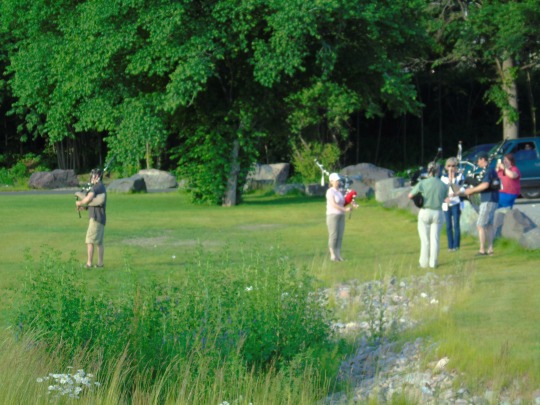

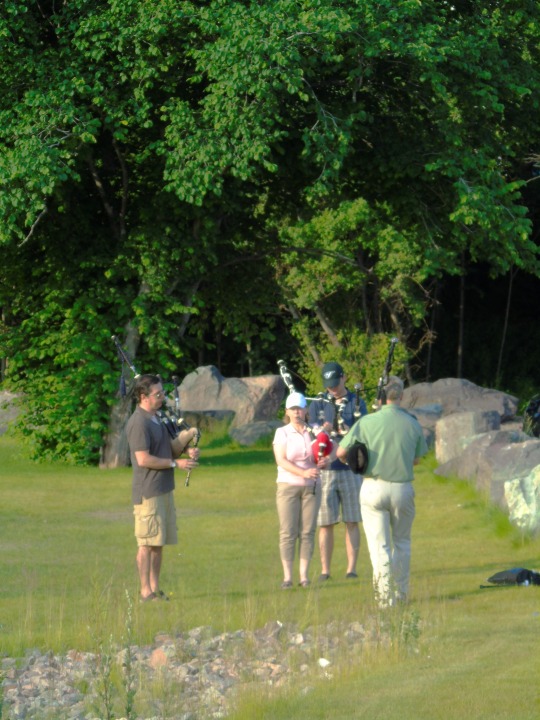
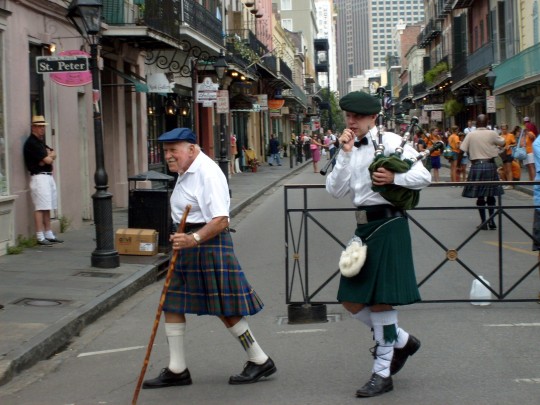
Bagpipe Appreciation Day
Today we celebrate the bagpipes! The instruments have long been associated with the Scottish Highlands, although they have come from many different places, and there are many variations of them. They have also been used in many different contexts.
The main components of the bagpipe are the bag, chanter, and drones. The bag is usually made of animal skin or rubberized cloth. It is inflated either by having air breathed into it through a blowpipe or by using a bellows. Air can then be fed throughout the instrument to make the sound, by placing arm pressure on the bag. The bag allows sound to be continuous while giving players the chance to take breaths, as well as for several tones to be played at the same time.
The chanter, or melody pipe, has finger holes that let a player make notes to form melodies. The other pipes, called drones, may have single or double reeds. They play single, constant notes that accompany the melody. They are tuned with the chanter by lengthening or shortening their extendable joints. The pipes are in wooden sockets, or stocks, which are tied into the bag.
Initially, folk instruments, bagpipes have remained as such, but also have been used in battle, at parades, funerals, weddings, and royal occasions. They were probably first used by pastoral sheep and goat herders, who played them to pass time while watching their flocks. They made them with easy-to-come-by materials such as skin, bones, and reeds. These instruments would quickly decay, so there is no physical evidence of them.
Bagpipes may have been used for centuries before any record of them was made. Most believe they were invented in the Middle East, and that the sheep and goat herders that used them were in Mesopotamia. There is some indication that they were used in ancient Egypt. A Hittite wall carving from around 1000 BCE shows a form of a bagpipe, and they are mentioned in the Bible in the book of Daniel. A bagpiper is also possibly depicted on an Alexandrian terracotta figure from around 100 BCE.
From the Middle East, bagpipes likely traveled to Greece, where they were known as "askaulos," meaning "wineskin pipe." They are mentioned in one of Aristophanes's plays from about the fourth century BCE and appear in other Latin and Greek references from around 100 CE. After the Romans invaded Greece, the bagpipe was adopted throughout the Empire just as other Greek culture was. They were mainly used by plebeians, but even Nero was known to play one. They were also used by the Roman infantry, while the Roman cavalry used the trumpet.
The British Isles became the most popular home for bagpipes. Invading Romans may have brought them there, or they may have later arrived by trade. They were mentioned in English author Chaucer's The Canterbury Tales in the 1380s. Some think they were imported to the British Isle of Scotland from the Romans, while others believe they came from England, Ireland, or developed in Scotland on their own.
Original Scotland pipes probably had one drone, with a second drone likely added in the mid to late sixteenth century, and a third drone likely added in the early eighteenth century. Scottish Highlands bagpipes had two tenor drones and one bass drone. It was there that bagpipes became more popular than anywhere else in Scotland or the world. In the Highlands, players were influenced by Celtic legends as well as by the wild nature of their surroundings. The players held an honored position in their clans. There are references to Scottish Highland bagpipe players by the fifteenth century, who played at weddings and festivals and even replaced organists at church. During the mid-sixteenth century, at a time when bagpipe music was descendent through most of Europe, it was ascendant in the Highlands. The MacCrimmon family did much to nurture its growth. A classical musical form that used the bagpipes sprang up there; it was called piobaireachd and predated the piano and its classical music by about a century.
Originally pastoral and festive, the military began using the bagpipe in the eighteenth century and accompanied it with drums. Battlefields were loud, so instruments were used to communicate. Bagpipers from clans—who were often at war with each other—would inspire soldiers before battle, and played during battles to signal movements, attacks, and retreats. When the Scottish uprising of 1745 failed, military training was banned. Thus, the bagpipe could no longer be used in this context anymore, although it was not banned for other uses.
In the Scottish Lowlands, pipers held important positions in communities. There were town pipers, and those who played dance music and songs at weddings, feasts, and fairs. The soft sounding Scottish Lowland bagpipe was played from about 1750 to 1850; it had a bellows, and three drones in one stock.
When England and Scotland united in the early eighteenth century, bagpipes were brought all over the world to British colonies, to places such as Africa and Ceylon. In many places, there already were indigenous bagpipe type instruments, which had been used for folk music and military purposes. Some examples are the tulum of Turkey, pilai of Finland, zampogna of Italy, mashak of India, mizwad of Tunisia, tsampouna of Greece, volynka of Russia, gaita of Macedonia, and the Bedouin habban.
There are many variations of the bagpipe popular today, such as the cornemuse of central France, the aforementioned zampogna of Italy, and the Irish union pipe. The most popular is probably Scotland's Great Highland bagpipe. Today we celebrate all types of bagpipes, and their importance to culture and in bringing us music!
How to Observe Bagpipe Appreciation Day
Playing the bagpipe is probably the best way to celebrate the day. Perhaps you already have one and know how to play it, or maybe you still need to get one and learn. Listening to artists who feature a bagpipe is a great way to celebrate the day, as is listening to bagpipe versions of popular rock songs. You could also read a book on the history of bagpipes, or a book on Highland bagpipes. If you feel like seeing some bagpipes firsthand, you could visit the Musical Instrument Museum in Phoenix, Arizona, or plan a trip to the Morpeth Chantry Bagpipe Museum, or the International Bagpipe Museum.
Source
#Bagpipe Appreciation Day#Halifax Citadel National Historic Site of Canada#Fort George#Nova Scotia#Cape Breton Island#Sydney#New Orleans#Louisiana#Ottawa#Ontario#Canada#summer 2009#2015#travel#vacation#original photography#changing guards#Parliament Hill#cityscape#architecture#BagpipeAppreciationDay#27 July#music
0 notes
Photo
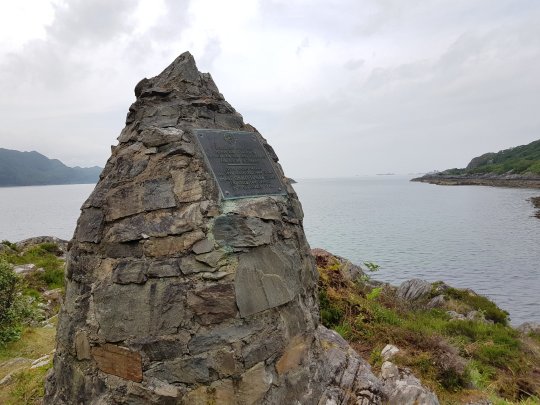
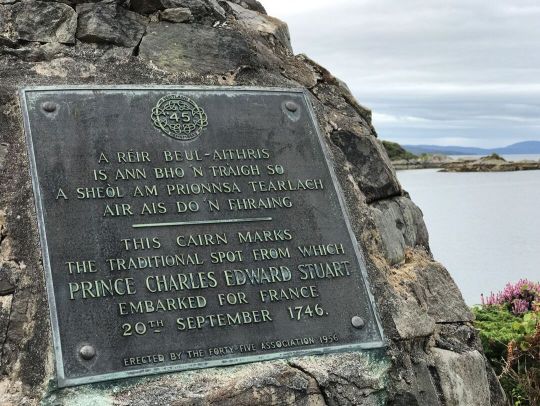
September 20th 1746 saw Prince Charles Edward Stuart flee Scotland on the French frigate L'Heureux,
The pictures shows the Prince’s Cairn at Loch nan Uamh in Lochaber. It was erected in 1956 by the 1745 Association. Loch nan Uamh is also the place where the Prince first set foot on the Scottish mainland 14 months before.
This full account is from the 45 Association.
On 19th September 1746, Charles arrived from “Cluny’s Cage,” that wonderful refuge on Ben Alder, accompanied by Lochiel, John Roy Stewart, and others. There they found L'Heureux, the French frigate that was to carry him to safety. All that day, the 19th, they embarked the refugees that were to accompany the Prince into exile., and on the 20th they sailed away from Scotland. The Prince never saw it again, except perhaps in the dreams which may have helped to mitigate the bitterness of his later life.
One can imagine the thoughts that may have filled Charles’ mind as he stood aboard a French frigate again, and again gazed on the shores of lovely Loch nan Uamh, and recalled his first jubilant sight of these very shores. And one can imagine the full hearts of Cluny and the others who elected to remain in Scotland when they saw L'Heureux slip off into the dark hours of the 20th, before daybreak, carrying their beloved Prince away from them. Nothing remained but to try and dodge Cumberland, and await events—disastrous events for the Highlands as they proved to be.
But the romantic story of Loch nan Uamh does not end here. Over two hundred years later, on 4th October, 1956, the loch witnessed a strange and moving sight. Just before eleven o'clock on that morning some two hundred people gathered on the small promontory on the shores of the Loch, which had been trodden so often by The Prince. But it was a different promontory now, for it was crowned with a cairn, the ancient Highland symbol of remembrance. The cairn was draped with the cross of Saint Andrew, and around it fluttered the banners of the loyal clans.
To this scene at noon came Scotland’s Lord High Constable, the Countess of Erroll. With her were Cameron of Lochiel, and the laird of Inverailort, descendant of the Cameron chieftans of Glendessary. It is a strange quirk of fate that only once before has Scotland’s hereditary Lord High Constable been a woman– and that was during the ‘45. As the Countess unveiled the cairn, its loving builder John MacKinnon of Arisaig played a piobaireachd in salute. So, later, did Angus MacPherson the doyen of Scottish pipers. a descendant of Cluny’s piper, who hid with the Prince and Cluny in the “Cage” on Ben Alder.
And, as an apt conclusion, Francis Cameron-Head, the laird of Inverailort, and the man who did most to get the cairn built by the Forty-Five association, played a tune “Prince Charlie’s Farewell to Moidart”. This was composed at the time of the Prince’s final departure, and was known only to his family. It was the first time the tune had been played in public for two hundred and ten years.
The driving rain did not damp the proceedings. The two hundred Jacobite descendants there had gathered from far and wide—from as far afield as Kentucky, U.S.A.–to see the cairn unveiled. This was no exhibition of maudlin sentimentality. As Seton Gordon has written, the Prince “was the means of showing the world that loyalty and devotion were, in the opinion of his followers, such noble ends that discomfort, pain, even death itself, were as nothing in comparison.” That is why sober and industrious citizens of the modern world took time from their daily tasks to assemble on Loch nan Uamh.
For the definitive story of the 45 Uprising check out their web site here https://www.1745association.org.uk/
25 notes
·
View notes
Text
Thanks for the tag @cicadalovemail !
(Tag 10 people you want to get to know better)
Relationship status: single
Favourite colour: dark and rich blues, indigo is a big obsession as of late.
Three favourite foods: enchiladas of any kind, eel rolls with tempura (literally any kind of tempura), and fried clams
Song stuck in my head: Biscaya by James Last, if you like the concertina boy is this one for you
The last song I listened to: I think it was Brigg Fair by Jackie Oates
Last thing I googled: Piobaireachd of Donald Dubh because I love that tune and a regimental march that I hold in high sentiment
Dream trip: the Isle of Skye or La Rochelle in France, also from what I've seen Antalya looks like a gorgeous spot to visit, oh and Japan, I'd love to visit Tetsumonkai and visit some museums
Anything I really want: so much tbh, but at the moment I most want to go to my favourite park and to take some pictures for a new blog series I'm thinking of starting!
I'm gonna tag (but only if you'd like to as always) @tuulikki @pyro-hairedguy @gravewick @gayforbagels
11 notes
·
View notes